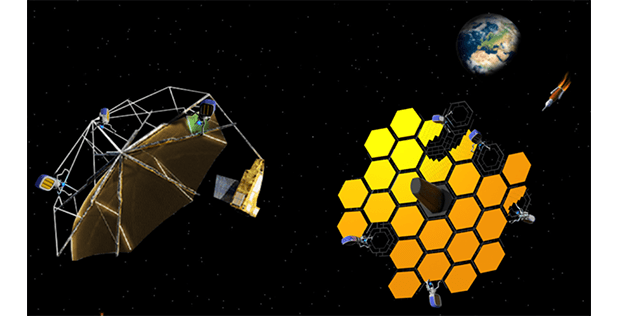
The Defense Advanced Research Projects Agency (DARPA) recently launched a space-based manufacturing exploration initiative targeting future space structure production on-orbit without volume constraints.
The agency’s Novel Orbital Moon Manufacturing, Materials, and Mass Efficient Design (NOM4D) program is underway, deploying eight industry and university research teams on contract.
“Current space systems are all designed, built, and tested on Earth before being launched into a stable orbit and deployed to their final operational configuration,” NOM4D Program Manager Bill Carter of DARPA’s Defense Sciences Office said. “These constraints are particularly acute for large structures such as solar arrays, antennas, and optical systems, where size is critical to performance. NOM4D aims to enable a new paradigm where future structures that support DoD space systems are built off-Earth using designs optimized for the space environment, shedding launch constraints. This would enable enhanced capability, improved robustness, operation in higher orbits and future cislunar applications.”
The teams are charged with providing foundational proofs of concept within the realm of materials science, manufacturing, and design technologies to ferry raw materials from Earth and collect lunar materials for on-orbit manufacturing. All manufacturing would be done in orbital construction facilities, and the results utilized in orbital applications.
“Assuming current space technology trends continue, in 10-20 years, we expect to see advances that will enable DoD to take full advantage of the NOM4D-developed technologies and capabilities,” Carter said. “This includes robotic manipulation sufficient to enable assembly of large structures from NOM4D-manufactured components, enhanced on-orbit mobility, and routine re-fueling of on-orbit assets. We also anticipate several other advantages, including more affordable space access and launch costs in LEO [low-earth orbit], GEO [geosynchronous orbit], cislunar space and beyond.”




